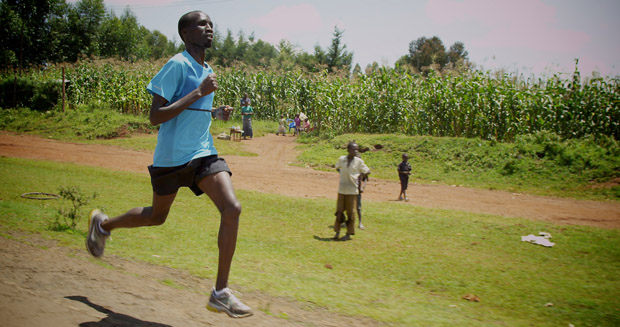Citizen Korir
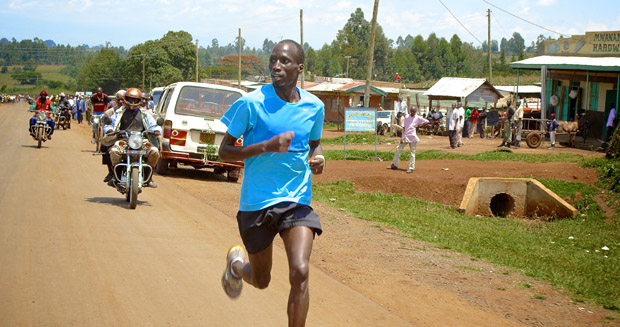
A Canadian filmmaking duo set out to make a documentary about elite marathoners. Then they met Wesley Korir. This is the story of the making of Transcend.
By: Adrian Del Monte
When my younger brother, Michael, told me that he wanted to make “the great running movie” I remember scoffing dismissively. Although Michael is a very talented runner – the Ontario University Athletics record holder over 1,000m – he seemed out of his league on this one. Not only would he and his filmmaking partner, Tad Munnings, need to penetrate the highly insular world of elite distance running, he would also have to secure funding, organize an interested crew of filmmakers, and conjure up a story that audiences hadn’t seen before.
The greatest of his problems was that the best runners in the world do not invest a whole lot of time talking to the Western media. Aside from the Olympics, rimetime television has never been able to connect with African runners on a wide scale. Sometimes we get glimpses of them – shuff ling their feet before a major marathon or ripping past us at a turnaround – but these runners are, for the most part, inaccessible to us. They don’t get asked to do many interviews and they’re not on billboards. These are probably the greatest male and female runners of all time, but finding them? That’s a different matter.
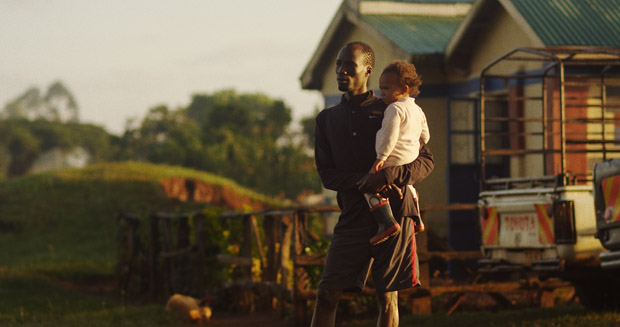
But then one day in 2012 my brother was in a public bathroom – at a track meet, if that helps – when the surprise winner of that year’s Boston Marathon, Wesley Korir, wandered in. Sensing an opportunity – but still without funding, a team, a plan, or, it seems, tact – Michael cautiously approached.
“Tad and I initially thought our film would follow several elite runners. We wanted to try to explain why some runners were better than others. Korir was supposed to be the first of many,” Michael says.
That bathroom banter began a two-year journey that would ultimately result in Transcend, a feature film that not only peels away the shroud of secrecy surrounding elite distance runners, it offers an inspirational and moving story that all audiences will love.
That conversation with Korir prompted an invitation for Michael and Tad to travel to his home in Kenya. They sought out an angel investor from Guelph, Ont. and secured $15,000, enough funding to fly them and a cameraman to Kenya. They didn’t have a lot of money, but they had the Boston Marathon champion on board, and that was enough. “The funny thing about that first trip,” Tad says, “is that we still didn’t have a definitive direction for the film. That’s the part of documentary making that is so challenging. You can’t predict where your subjects will take you.”
Adds Michael: “We had no idea what we had gotten ourselves into. Korir forgot to tell us that his house didn’t have electricity. So we spent a lot of money we didn’t have buying a generator we couldn’t afford to power equipment that wasn’t ours.”
But it was that trip – and a teaser trailer they released soon after – that got others interested. In the next twelve months, Tad and Michael would interview a slew of the best runners ever: double-Olympic gold medallists Mo Farah and Haile Gebrselassie, world record holders Kenenisa Bekele and Tirunesh Dibaba, American record holder Ryan Hall, and Olympic marathon champion Tiki Gelena. They also filmed golden boys of Canadian distance running, Cam Levins and Reid Coolsaet, along with New York Times best-selling author, Malcolm Gladwell.
Each time my brother returned from one of these trips anticipation grew. If you grew up a competitive runner these were your heroes – the men and women who have dominated distance running for the past 20 years. Tad and Michael had just got the running equivalent of Gretzky, Lemieux and Crosby into the same room for the first time.
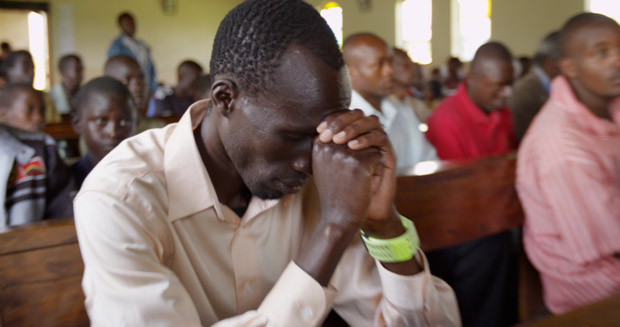
One of the stories that the crew was particularly interested in was of twin brothers, Zane and Jake Robertson, two promising junior runners, who had moved from their middle-class home in New Zealand to live and train with the Kenyans when they were just 17 years old. The Transcend crew spent eight months following the Robertsons. Their journey –accompanied by bouts of malaria, sleeping in a concrete bunker, struggling with isolation and depression, culminates in national records, world championship finals, and a bronze medal for Zane at the Commonwealth Games – seemed to be just the kind that Michael and Tad were looking for.
The film’s focus, however, is Korir. “In the final version of the film, many of the legends have been cut out,” admits Tad. “Although it was remarkable to work with such icons of the sport, it was Korir’s journey that best answers the questions we were asking.” (Although,
the complete interviews can be found as four additional documentaries on the
Blu-Ray/DVD version of the film.)
“All of our editors and colleagues who saw early versions of the film just wanted to know more about Wesley,” says Michael. Korir became a metaphor for how the greatest runners in the world became legendary. “Wesley’s greatest attribute is that he is completely delusional,” laughes Tad. “He simply under-thinks how difficult things are going to be. And then, because he is such a hard worker, he just goes out and does it. In North America, we overthink everything. Wesley thinks just a little, and then does it 100 per cent.”
The day before the 2013 New York City Marathon, for example, Michael accompanied Korir on an easy run. Early in the run, Korir asked Michael, a 3:46 1,500m runner who had run 14:31 for 5k a week earlier, if the New York course had a lot of hills on it. Learning there were hills, Korir began surging up every one he could find in Central Park. “I remember looking at my Garmin midway up one hill,” says Michael, “and here I am running just under 3:40 per kilometre, absolutely hammering myself, and he’s getting away from me. But that’s Korir. When he decides to do something, he just does it.”
The two-year journey comes to a climax at the 2013 Boston Marathon. Tad recalls standing on some bleachers watching the elite men’s race unfold. “At 1:54:00 into that race, Wesley does something we never could have imagined. What was so staggering was that only Michael, Wesley’s wife, and I knew the significance of what we were witnessing. It perfectly captures everything we wanted this film to be about.”
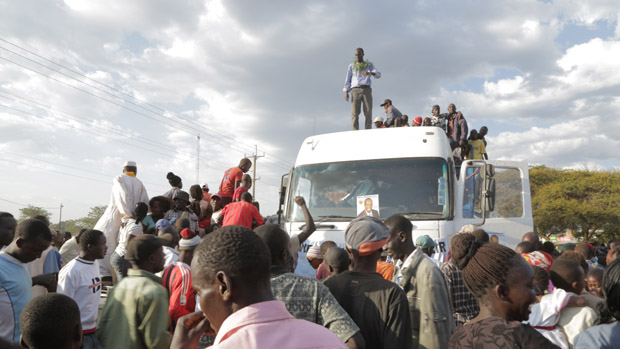
My brother laughs when asked what the greatest challenges were. “You know, the destiny of the film has always been unsure. At one point in our shooting, Wesley decided to retire from running. Then a major race wouldn’t give us access to video footage. Once in Ethiopia, Tad had to ask a local man to let him borrow his rifle so he could balance himself on an antenna on a crumbling rooftop to get a shot of 40,000 Ethiopians in a race.”
But the greatest challenge was always in the editing of content that audiences would love. One particularly difficult edit was of a workout Michael and Tad filmed with Canadian marathoner Reid Coolsaet just before his assault on the Canadian marathon record in Rotterdam. “Reid had just come off sickness and wasn’t in the form he hoped,” Michael says. “But here he is, clenching his hands in expectation, saying something like ‘if I don’t believe I can run 2:10, get my mind wrapped around it, I won’t ever do it.’ If there was ever a line to be in the film, that was it. But we still couldn’t make it work.”
“Reid’s story, the Robertsons, everyone we worked with, had such good content,” says Tad. “But the sum is always greater than the parts. And Wesley was the sum of everything. Everything we wanted to get in, we got in through Wesley.”
Towards the end of the film’s journey, Michael and Tad hired an editor from the Kennedy/Marshall Company, a prestigious Hollywood production studio behind films such as E.T., Jurassic Park, and the Bourne Trilogy. Michael and Tad travelled to Santa Monica, Calif., to work with the editor. They expected to edit their piece and then come home. However, half-way through the week, the editor said that Frank Marshall, the company’s president, needed to see the film.
“That was a very special day for us,” says Michael. “Who would have thought that I would be eating popcorn with the guy who produced Indiana Jones, watching our movie. When Frank said he loved the film, that put a smile on all of our faces.”
Since then, Kennedy/Marshall has become an executive producer, and is helping to bring the film to companies like ESPN, the Rock ’n’ Roll Marathon Series, and Nike, along with gaining acceptance to several notable film festivals.
“It’s surreal and very humbling,” says Tad, “to see what began as our passion project for the running community now becoming something that Frank Marshall is backing in front of Nike executives.”
In the end, Transcend does everything it was intended to do. While some may feel they aimed their ambitions too high, and others may want more scenes of epic workouts, the story is fundamentally about a champion in Wesley Korir who confronts challenge after challenge yet refuses to quit. “We wanted a film that would make runners proud,” says Tad. “And it will. But what we are most satisfied about is the message of Transcend – that anyone should believe that they’re capable of more.”
